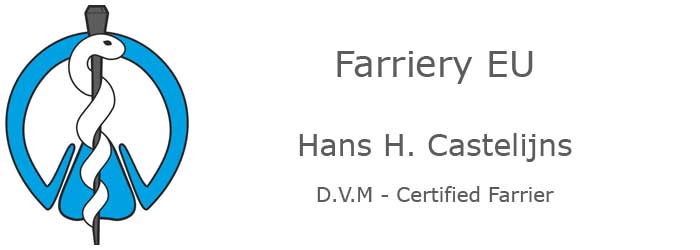
New Strategies for Treating Club Foot |
||
Club foot is best described as hypo-extension of the distal inter phalangeal joint (DIPJ), usually on the front limbs. Foals can be born with the condition. They can acquire the condition during rapid growth (2-4 months of age), when the lengthening of the distal limb, with active growth plates at the second and first phalanx (PI, PII) and metacarpus III (MCIII), can cause the distance -between the proximal attachment of the inferior check ligament (ICL) and the distal attachment of the deep digital flexor tendon (DDFT) at the cresta semilunaris of the third phalanx (PIII)- to increase to rapidly for the tendonous ligamentary unit to follow suit. This acquired condition can have a sudden, bilateral, onset, where by the heels of the front feet don’t touch the ground (“ballerina syndrome”) and the foals stand on their toes. Grass-foot is the condition where the foal adopts a grazing / feeding stance with one foot forward and one foot back ward -under the body- so as to easier reach the ground while feeding. In this case the later distal limb will have a more upright conformation. Finally yearlings can break off large portions of their dorsal hoof wall when the ground hardens up after a wet spring and, besides being foot sore, become quite upright in a short time. Treatment depends on the foals age and cause of the condition, and includes: The author has used this gradual approach over the years, with often astonishing results even in older (6-7 months) foals without the need for surgery. To make things easier on the farrier, patient, and stud manager, the author’s preferred method is the application of a glue on shoe (Dallmer foal shoe or cuff) after trimming the heels to normal desired length. An aluminum plate with a toe extension of the same length as the hoof, a rockered toe and initial heel elevation is then screwed on to the shoe. The heel elevation should be high enough to make the DDFT feel less tight on palpation. Every few days the plate can easily be removed with an electric screw driver, the heel elevation reduced and the plate reapplied at a lower height as the condition improves. It is important to note that management measures, stall rest on firm footing followed by controlled exercise and dietary restriction, have to be taken as well. On yearlings the application of a sole-covering aluminum shoe, usually of 6 mm thickness with a slight toe extension, with premium rehe®1 applied between the sole and the shoe, while leaving the frog uncovered, has given good results when the toe is excessively worn / broken off. At this age these shoes can usually be nailed on with small nails. It has been the author’s experience that with this modern version of an age old treatment (the ”Florentine” shoe) inferior check ligament desmotomy can often be avoided. It should be noted that in the case of surgery a toe extension, in this case without initial heel elevation, is still called for during recovery / rehabilitation. 1) Premium-rehe – Luwex Gmbh – Regenburger StraBe 67 D-92224 Amberg. |
 |
|
 |
||
 |
||
 |
||